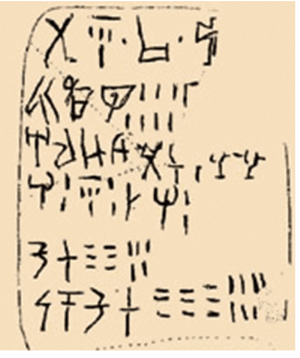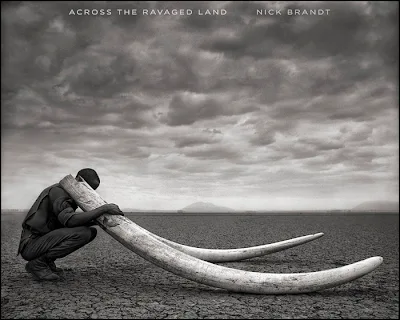Gal Weinstein, Fire Tire, 2010. For his installation israeli artist used wax, wool, polyester wool,
styrofoam and graphite to replicate burning tires emitting smoke. Some of the
sculptures created for the piece reach up to 4 meters in height.
Λάστιχα
έχουν πάρει φωτιά μέσα στο Γενί Τζαμί. Ο καπνός έχει γίνει ντουμάνι. Και όμως
κανείς δεν προσπαθεί να τα σβήσει, ούτε κανείς προσπαθεί να απομακρυνθεί. Διότι
τούτα τα ελαστικά που καίγονται δεν τα έχουν ανάψει διαδηλωτές, αλλά είναι μία
από τις 220 και πλέον εικαστικές δημιουργίες που έχουν απλωθεί σε επτά
εκθεσιακούς χώρους της Θεσσαλονίκης, εκεί που χτυπά η καρδιά της 4ης Μπιενάλε
Σύγχρονης Τέχνης Θεσσαλονίκης που διοργανώνεται στην πόλη και θέμα της «Παλιές
Διασταυρώσεις - Make
it New II».
«Τα
λάστιχα αποτελούν φθηνή καύσιμη ύλη», λέει ο ισραηλινός καλλιτέχνης Γκαλ
Βάινσταϊν, ο οποίος έφερε την εντυπωσιακή εγκατάστασή του στην Ελλάδα στο
πλαίσιο της Μπιενάλε. «Αυτός είναι και ο λόγος που χρησιμοποιούνται παγκοσμίως,
είτε όταν θέλει κάποιος να ανάψει φωτιά για διασκέδαση είτε ως σύμβολο
πολιτικής ή κοινωνικής αναστάτωσης».
Τα
δικά του καμένα λάστιχα βεβαίως δεν είναι πραγματικά και ο καπνός από κερί,
μαλλί και αφρό πολυουρεθάνης τελικά τα κάνουν να μοιάζουν περισσότερο με ποπ
γλυπτά, χωρίς το «επαναστατικό» άρωμα που κουβαλούν οι πρωτότυπες εικόνες από
τις οποίες εμπνέεται ο καλλιτέχνης, κυρίως από βίαιες συγκρούσεις πολιτών με
την Αστυνομία όπως καταγράφονται στα φωτορεπορτάζ των εφημερίδων.
Gal Weinstein, Lighthouse, μεικτή τεχνική, 2012
In the past,
beacons were used to function as a kind of lighthouse for marking dangerous
places for boats at sea. The smoke tower in the work Lighthouse functions
almost as a reverse lighthouse – light at the bottom and thick smoke rising
from the top. Unlike the lighthouse, which is intended to help you get your
bearings, the smoke rises and blocks the view towards the horizon. It doesn’t
mark the presence of land – it is situated between the sea and the sea. It is
fueled by burning oil and develops and grows from the water on the background
of the air. The land is missing from the picture. Water, air, fire, and smoke;
these are images that lack lines of definition, substances that are not solid
and cannot be felt, in constant movement, not holding any form of stability.
The image of the
tires in flames evokes situations of community unrest, of chaos and social
anger, of uncontrolled reactions linked to the impulse to demonstrate “against”
something.
One of the
principal challenges of the work Fire
Tire is the attempt to “give form” to one of the most elusive things in
existence, smoke. The simplicity of the materials from which the work is made
contrasts with the significance of the themes and the images selected and with
the rigor discernible in the design and realization. The discrepancy gives
rise, in Weinstein’s work, to short-circuits of meaning and raises questions
about the relations that can exist “between interpretation and experience,
between expression and opinion”.
Only by dealing
with the complexity of the present and taking responsibility for the problems,
the uncertainties, the diverging expectations and the dilemmas that society
presents to each one of us it is possible, according to Gal Weinstein, to avoid
cultural catastrophe. It is necessary to be actively involved and to assert
one’s own individuality, without forgetting that the social network to which we
belong is a constraint, a necessity and an opportunity.
Ο
τούρκος - αρμενικής καταγωγής - σκηνοθέτης, συγγραφέας και παραγωγός Χουσέιν
Καραμπέι που παρουσιάζει στο Γενί Τζαμί τη μικρού μήκους ταινία του κινουμένων
σχεδίων με τίτλο «Κανένα σκοτάδι δεν θα
μας κάνει να φοβηθούμε», καθώς η πολιτική δεν θα μπορούσε να λείπει από την
κεντρική έκθεση «Παντού αλλά τώρα», που φρόντισε η επικεφαλής επιμελήτρια
Αντελίνα φον Φίρστενμπεργκ και στην οποία συμμετέχουν 50 καλλιτέχνες από 25
χώρες (από Βραζιλία και Κούβα έως Ινδία και Ιράν, όπου ανάμεσά τους βρίσκονται
και σταρ καλλιτέχνες όπως η Μαρία Αμπράμοβιτς, η Γκάντα Αμέρ και ο Τζαφάρ
Παναχί) με στόχο να αποτελέσει τόπο ανταλλαγής και συνάντησης, ακολουθώντας το
πρότυπο της Μεσογείου.
«Η
Ιστορία θα επαναληθφεί αν την ξεχάσουμε ή αν την αφήσουμε να ξεχαστεί», λέει ο
δημιουργός, που μέσα σε εννέα λεπτά κατάφερε να καταγράψει τον πόνο, αλλά και
τις ισορροπίες που έφερε η επιστολή της Ράκελ Ντινκ, της χήρας του συμπατριώτη
του δημοσιογράφου Χραντ Ντινκ, που δολοφονήθηκε από έναν 17χρονο τούρκο
εθνικιστή. «Ήμουν πολύ θυμωμένος», θυμάται τα γεγονότα του 2007 ο σκηνοθέτης
για τη δολοφονία του παιδικού φίλου του πατέρα του. «Και το ίδιο χιλιάδες
άνθρωποι που ήρθαν στην κηδεία. Αν η Ρακέλ δεν είχε διαβάσει αυτό το γράμμα με
τη μοναδική της φωνή μπορεί ο θυμός αυτών των χιλιάδων ανθρώπων να είχε γίνει
οργή και βία. Γι' αυτό και μετά την Ιντιρα Γκάντι η Ράκελ Ντινκ είναι η γυναίκα
που με έχει επηρεάσει περισσότερο».
“My love,
I always said Jesus
gave us so much love for each other. Hrant’s companionship was given to me. […]
Today is the day
when deep darkness will reach out to light. Whatever their age, seventeen or
twenty-seven. Whoever the murderers are, I know they were once small babies.
Without questioning the darkness that turns a baby into a murderer, nothing can
be done my brothers.
My brothers, his
affection for the truth, his love for clarity, his love for his friends,
brought him to this end. Challenging fear, his love fostered him. They say, He
was a great man. Let me ask you: was he born great? No. He was born just like
we all were. He didn’t descend from the sky. He too came from this earth. A
diminishing body, just like us. Except his soul, the work he did, his manner,
the love he carried in his heart made him great. A man doesn’t become great by
himself. One’s acts are what make one great.
Yes, he was a great
man. Because he thought big, and talked big as well. By gathering here today
you all thought big too. By staying silent, you talked big too. You are also
great. Don’t stop today. Don’t settle with what’s there.
He laid a corner
stone in Turkey’s history, and you’ve sealed it. Thanks to him the headlines,
the talks, and the prohibitions changed. There were no taboos, no untouchables
for him. As the holy scriptures say, words flooded from him. He paid a big
price. [...]
My love, who could
forget what you did, what you said? What darkness could make us forget? What
could make us forget what happened to you? Could fear make us forget my love?
Life? Oppression? Pleasures of this physical world? Or will death make us
forget my love? No. No
darkness can do that my love”.
Rakel Dink, excerpt
from Letter to the loved one, 2007. Speech held in Istanbul during the funeral
of her husband Hrant Dink, the Turkish-Armenian journalist assassinated in
Istanbul in 2007 by Ogün Samast, a 17-year old Turkish nationalist.
Προσωπικές
μνήμες με ένα μαντίλι και μια φωτογραφία
Το
μαντίλι της αρμένισσας γιαγιάς της Βραζιλιάνας Ροζάνα Παλαζιάν είναι το
κυρίαρχο στοιχείο στη βιντεοεγκατάστασή της.
Ένα
μαντίλι και μια φωτογραφία κεντούν τη μνήμη στην κεντρική έκθεση «Παντού αλλά
τώρα» της 4η Μπιενάλε Σύγχρονης Τέχνης Θεσσαλονίκης. Δύο οικογενειακά κειμήλια
που ταξίδεψαν από την Ελλάδα στο Ρίο ντε Τζανέιρο, σχεδόν 100 χρόνια πριν,
μετατράπηκαν σε έργο τέχνης για να συνθέσουν μια αληθινή ιστορία που μόνο η
μοίρα έμελλε πρόσφατα να αποκαλύψει. Την αφηγείται εικαστικά η Βραζιλιάνα
καλλιτέχνης Ροζάνα Παλαζιάν, με το μαντίλι που κέντησε η Αρμένισσα γιαγιά της
Noemi Dadoorian στη Θεσσαλονίκη, την πόλη που επί μια περίπου δεκαετία είχε
προσφέρει καταφύγιο στους πρόσφυγες προγόνους της.
Στη
βίντεο - εγκατάσταση «A Story I Never
Forgot» ανασυντίθεται η κερματισμένη μνήμη της Γενοκτονίας των Αρμενίων
(1915-1920) με βάση τα αντικείμενα και τις αφηγήσεις που άκουγε η καλλιτέχνης
παιδί. «Ο σταθμός της Θεσσαλονίκης από τη διαδρομή της προσφυγιάς ήταν και για
μένα άγνωστος ως τώρα», ομολογούσε η 50χρονη καλλιτέχνης καθώς έστηνε το έργο
της στον «γυναικωνίτη» του Γενί Τζαμί.
«Άκουγα
τη λέξη Tessalonica στις αφηγήσεις της γιαγιάς για τον ξεριζωμό των Αρμενίων,
ως αναφορά, αλλά δεν είχα καταλάβει. Ήξερα μόνο ότι οι παππούδες μου μετά τη
γενοκτονία έφυγαν από το Ικόνιο και μέσω της Ελλάδας κατέληξαν στη Βραζιλία. Άρχισα
να ξετυλίγω το νήμα με αφορμή την πρόσκληση για τη συμμετοχή μου στην Μπιενάλε
Θεσσαλονίκης. Σκέφτηκα ότι η φωτογραφία με τη γιαγιά μου που είχε φέρει στη
Βραζιλία με τα ελάχιστα υπάρχοντά της ήταν μια εξαιρετική ιδέα να στήσω ένα
έργο με αναφορά στην Ελλάδα. Στο Διαδίκτυο ανάμεσα σε εκατοντάδες φωτογραφίες
προσφύγων εντόπισα την ίδια φωτογραφία. Απεικονίζει γυναίκες πρόσφυγες -ανάμεσά
τους και η γιαγιά μου- που κρατούν κεντημένα μαντίλια. Τότε ανακάλυψα ότι είναι
τραβηγμένη στη Θεσσαλονίκη όπου η γιαγιά, κοριτσάκι τότε, δίδασκε κέντημα στη
Γενική Αρμενική Ένωση Αγαθοεργίας (AGBU) του Ερυθρού Σταυρού. Εκεί γνώρισε και
τον παππού μου Ghevont Dadoorian. Εφυγαν μαζί από τη Θεσσαλονίκη το 1927 με
προορισμό την Αμερική. Κατέληξαν στη Βραζιλία».
Το
μαντίλι της γιαγιάς που κρατούσε ως τον θάνατό της σαν φυλακτό τυλίγοντας
κλωστές και βελόνες, στο ολιγόλεπτο βίντεο, μετατρέπεται σε μπόγο, σε βιβλίο,
σε βαρκούλα που ταξιδεύει σε κεντημένες θάλασσες, από την Αρμενία στην Ελλάδα
κι από εκεί στη Βραζιλία, για να επιστρέψει και πάλι στη Θεσσαλονίκη.
Στην
οπτικοακουστική διαδρομή η καλλιτέχνης κεντάει τη φιγούρα της γιαγιάς στον
καμβά, σχεδιάζει στο φλιτζάνι του καφέ τη μοίρα, πλάθει ζυμάρι το ξεριζωμένο
πλήθος των Αρμενίων απλώνει κουβαρίστρες και κορυφώνει τη συγκίνησή της με
μεσαιωνική αρμενική μουσική.
Rosana Palazyan, … A Story I never forgot…, 2013
«Στην
έναρξη της εικαστικής μου πορείας τη δεκαετία του ’80, μια εποχή έντονης
κοινωνικής βίας στη Βραζιλία, ένιωθα άβολα να ασχοληθώ με το αρμενικό ζήτημα.
Χρειάστηκε να συνενώσω θραύσματα μνήμης. Καθώς ετοίμαζα το έργο της Μπιενάλε,
πλήθος κόσμου διεκδικούσε στους δρόμους της χώρας μου τα δικαιώματά του. Η
συγκυρία αυτή με έβαλε σε διαδικασία αναστοχασμού».
…A story I never
forgot… is a video installation in which the video, produced in an “artisanal”
manner, doesn’t pretend to achieve technical excellence, but to reorder and
organize the fragmented memory of the Armenian genocide (c. 1915 to 1920) based
on the stories and narrative heard since childhood. To forget it would mean
forgetting one’s own being.
Brazilian of
Armenian descent from both sides, having started the career in the end of
1980s, surrounded by episodes of violence and social, economical, and political
traumas in Brazil, I did not feel comfortable to deal with the Armenian theme.
My urgency was to bring together people numbed by the daily occurrence to these
issues. Since then I’ve been trying to delicately expand the reflection about
violence and exclusion in the social fabric, where everyone ends up victimized.
When invited to
take part in the 4th Thessaloniki Biennial, a city where my ancestors found
refuge for several years, the remote past became so close to me…
Who remembers the
Armenian genocide? I do.
It was necessary to
reassemble each fragment of memory as in a puzzle, full of enormous personal
cost, to narrate once again the story which was told to me and which I never
forgot: to remember and to remind, to never more happen.
History runs
through with a handkerchief embroidered by my grandmother when a refugee in
Thessaloniki, with the support of the Armenian General Benevolent, where she
was an embroidery teacher. Transformed in each episode, the piece covers the
story of her origin remembrances, the life in Greece and departure to Rio de
Janeiro, until its return as part of the work to the Biennale.
This text is
written in the heat of the moment, when multitudes are in the streets of my
country, fighting for their rights, living times we haven’t seen for a long
time. This made me think of all projects and experiences that art has provided
me.
If it doesn’t
change the world, I have been living art as a trajectory of understanding and
meeting the Other. I have tirelessly dedicated myself to transform the
relations of people in the face of such issues, trying to activate a
mobilization for a better world.
Rosana
Palazyan, June 2013.







































.jpg)



.jpg)

.jpg)
